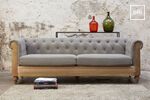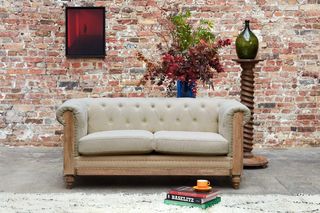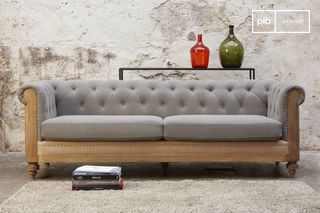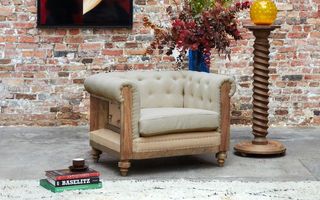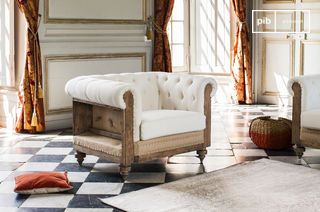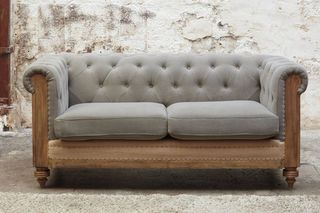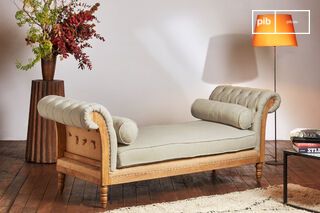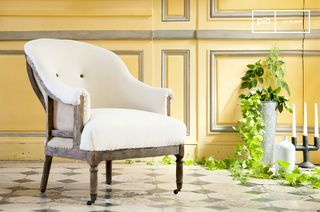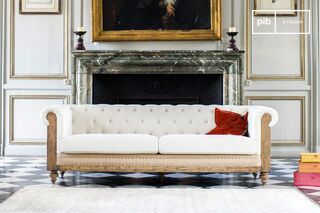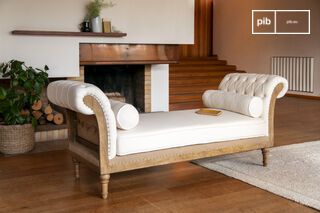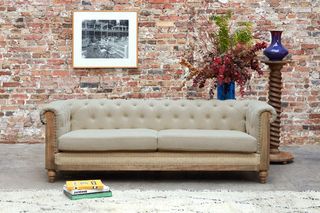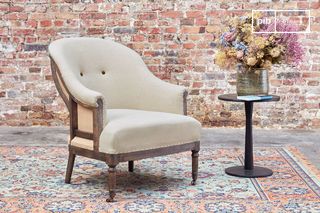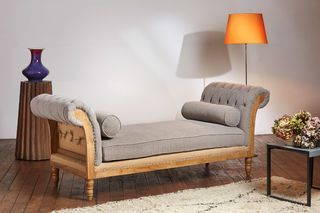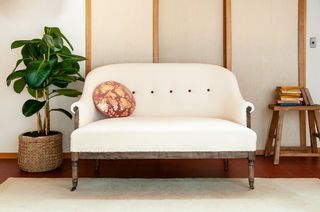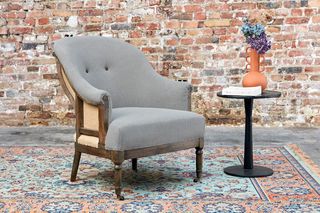Linen
The Linen category brings together furniture and textile elements whose covering is based on a plant fiber with a visible weft. Used for seats, curtains or cushions, linen naturally regulates light and temperature on contact. Its irregular texture introduces a matt, shine-free appearance, softening rigid lines. The material remains stable, non-stretchable, and retains its appearance even when frequently worn. Linen is chosen for its ability to balance volumes and for its compatibility with raw or mineral materials. read more >
Filters
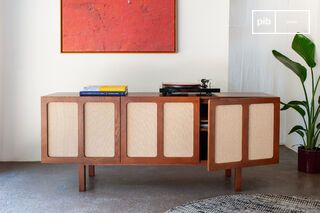
Walnut-tone wood and linen TV unitThalos
£1085 £970-10%
10 festive days
10% off our tables and consoles
Welcome your guests in style · Limited stock

Linen as a textile material for interior design
Linen is a fiber of plant origin derived from the stem of cultivated flax. Its use in furniture is based on precise functional characteristics: tight weave, dry feel, low elasticity, natural moisture absorption. The fabric is generally used to cover seats, cushions, curtains and panels. Its surface remains matte, with visible irregularities in the yarn, which prevents reflections and allows a smooth reading of the volume. The fiber does not stretch or shine, and retains a stable appearance over time, even when creased.
Visual effects and behavior of linen in space
Visually, linen softens sharp lines and absorbs light without altering it. It is often chosen in neutral or natural shades, to reinforce the continuity between the elements of a layout. Its visible weave creates a discreet vibrancy that complements mineral materials, untreated wood or weathered metal. Linen can be used as an optical screen in bright rooms. As a seat, it provides natural ventilation without transferring heat. As a curtain, it filters light without creating marked shaded areas. The material can crease, but without disturbing the overall perception of the object.
Logic of arrangement and material associations
Linen functions as a linking element between denser or visually marked materials. It pairs well with stone, leather, painted metal or light woods. In a living room, a linen sofa introduces a gentle break with a dark floor or rigid furniture. In a bedroom, a linen headboard or curtain can serve as a transition zone between wall and furniture. Linen should be avoided in damp areas or when exposed to sources of high heat. It can also be sensitive to greasy stains if left untreated, which is why washed or coated linen is preferable for certain uses.
The *Linen* category offers pieces whose interest lies in the simple, stable reading of the material. Linen regulates, connects and attenuates without erasing. Its use must be designed to last, in a stable environment with little mechanical stress.
The *Lin* category offers pieces whose interest lies in the simple, stable reading of the material
